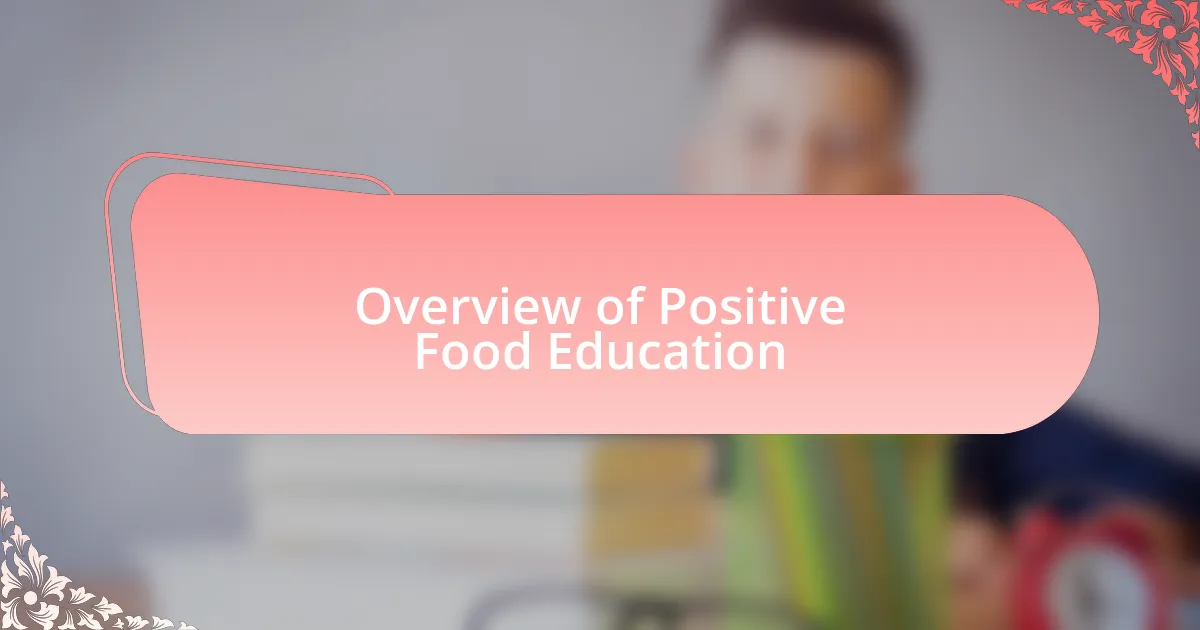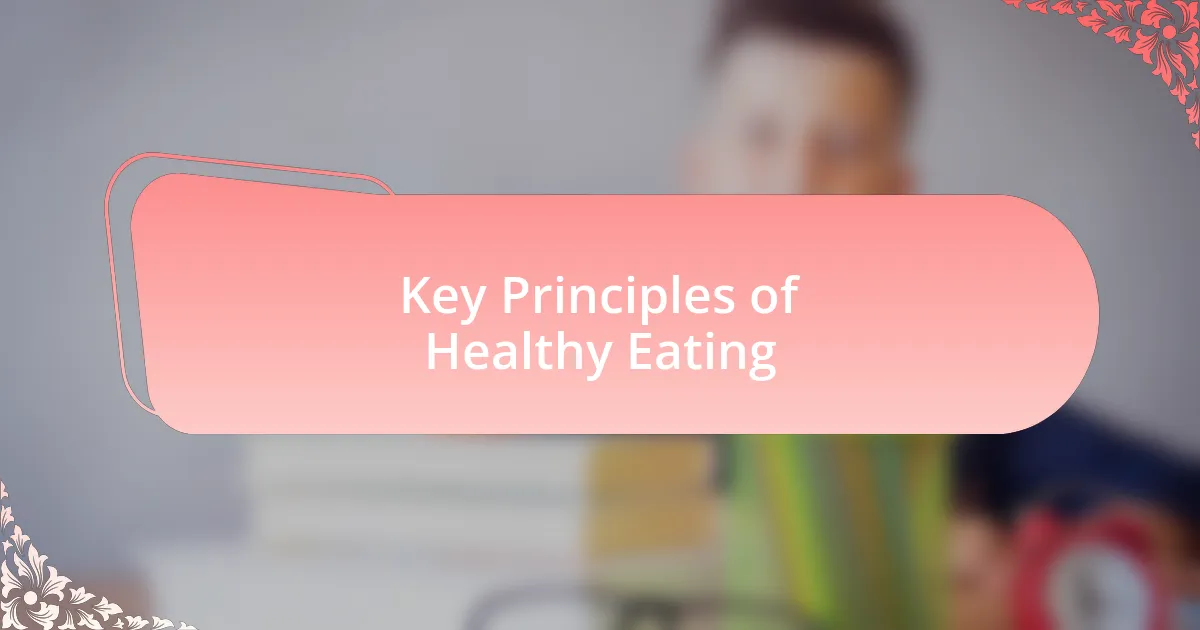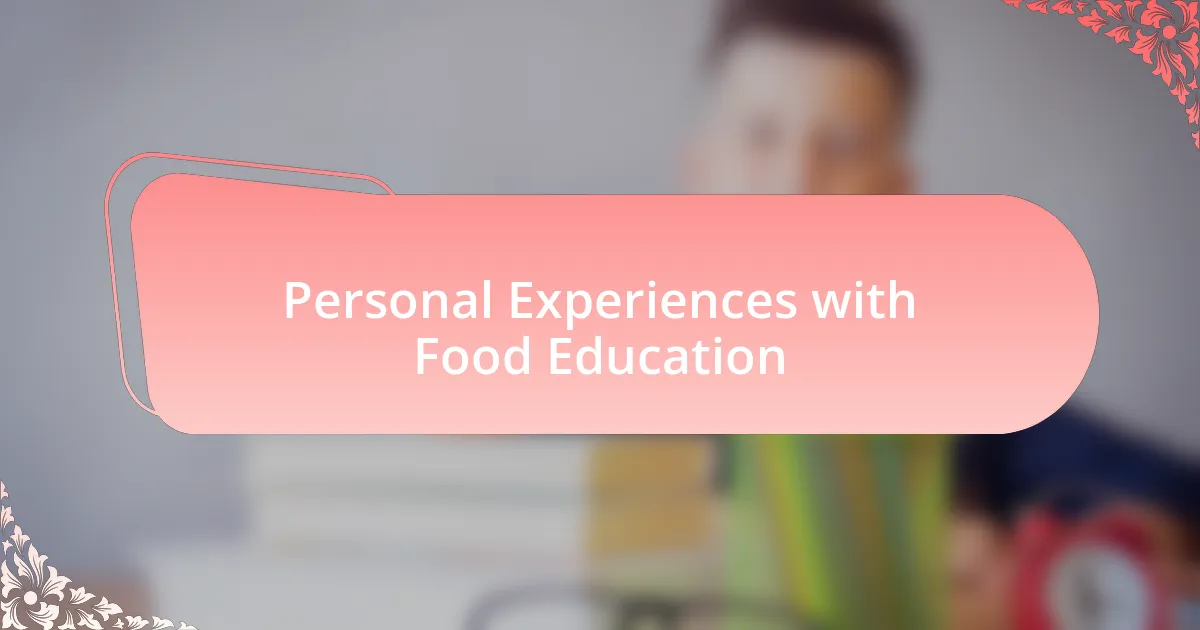Key takeaways:
- Positive food education fosters a healthy relationship with food through engagement in meal preparation and exploration of flavors.
- Key principles include balance and variety in meals, portion awareness, and creating a positive eating environment for family connection.
- Transforming mealtime into an event by eliminating distractions and incorporating fun elements enhances children’s willingness to try new foods.
- Early exposure to food education, through activities like grocery shopping and cooking, builds curiosity and understanding of healthy choices and sustainability.

Overview of Positive Food Education
Positive food education is about cultivating a healthy relationship with food from an early age. I remember the joy in my daughter’s eyes when she first tried to help me in the kitchen; it was as if she had unlocked a treasure chest. Engaging children in meal preparation creates a sense of ownership and curiosity about what they are eating.
At its core, positive food education emphasizes enjoyment and exploration rather than restrictions. Isn’t it fascinating how children often learn best through play and discovery? By introducing new flavors and textures in a fun manner, we help them develop a broader palate and a positive attitude towards healthy foods.
Positive food education also encourages mindful eating practices, promoting awareness of how food affects our bodies and emotions. I’ve seen firsthand how teaching kids to listen to their bodies can transform meal times from a battle into a joyful experience. How do you feel when you savor a meal instead of rushing through it? This approach nurtures not just physical health, but mental well-being as well.

Key Principles of Healthy Eating
Healthy eating is built on a foundation of balance and variety, allowing children to explore different food groups. I’ve noticed that when I present a colorful plate filled with fruits, vegetables, whole grains, and proteins, my kids are more eager to try everything. Isn’t it intriguing how a rainbow of food can spark curiosity and excitement at the table?
Another key principle is portion awareness. It’s not just about what we eat, but how much we eat. I recall a time when my son piled his plate high with pasta, only to leave most of it untouched. That experience taught me that serving smaller portions encourages him to finish what’s on his plate while still feeling satisfied. This gentle approach to portion control makes healthy eating feel less like a chore and more like a choice.
Lastly, fostering a positive eating environment is crucial for long-term healthy habits. I remember hosting a family dinner where everyone chose a dish to prepare, turning meal time into a shared adventure. This not only makes eating enjoyable but establishes a tradition of togetherness, reinforcing the importance of meals as a time for connection. How could meal times change for your family if you incorporated more collaboration into cooking?

Creating a Positive Eating Environment
Creating a positive eating environment starts with setting the right mood. I once dimmed the lights and lit some candles for dinner, and my children couldn’t stop talking about how special it felt. It was a simple change, but it transformed the meal into an event, making them more excited to share their thoughts on the food and each other’s day.
Another thing I believe makes a significant difference is keeping the table free from distractions. One night, I decided to put away our devices and focus solely on each other. The conversations flowed, and I noticed my kids were more engaged and willing to venture into trying new dishes. Have you ever wondered how much more connected you could feel as a family by simply eliminating distractions during meals?
Incorporating fun elements into the dining experience can also amplify positivity. I started a “food art” night where we create faces or scenes out of fruits and veggies. The laughter and creativity not only encourage my kids to eat healthier but also deepen our bond at the table. What unique twists can you add to your meals that would spark joy and curiosity for everyone involved?

Personal Experiences with Food Education
I’ve always believed that food education should start early, so when my children were toddlers, I took them grocery shopping with me. I remember watching their faces light up as we explored the colorful produce section together. Asking them to pick out a fruit they had never tried before turned into an adventure, and it sparked their curiosity about flavors and nutrition. Isn’t it amazing how a simple trip to the grocery store can become a lesson in healthy choices?
Cooking has also been a platform for education in my home. One afternoon, I invited my children into the kitchen to help make a vegetable stir-fry. As we chopped, I shared the benefits of eating a rainbow of vegetables and how each color offers different health perks. Their eyes widened when they realized they were not just preparing dinner but gaining knowledge that would hopefully last a lifetime. Have you ever thought about how cooking together can turn into a classroom experience right at home?
Reflecting on my experiences, I see that discussions about where food comes from can have a profound impact on understanding. On a particularly warm summer day, I took my kids to a local farm to pick strawberries. When they saw the plants and harvested the berries with their own hands, they grasped the connection between nature and the food on their plates. It wasn’t just about picking fruit; it was a lesson about sustainability and the importance of supporting local agriculture. What more could we learn if we explored these concepts together as a family?